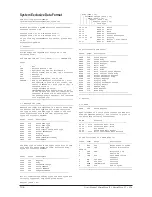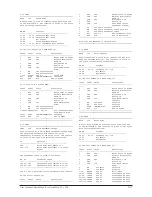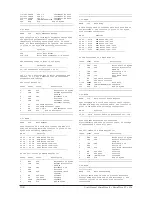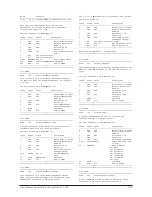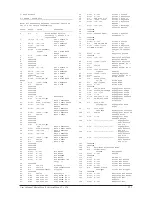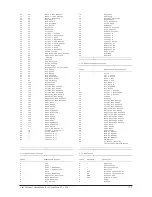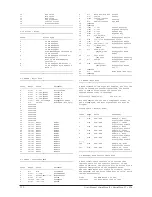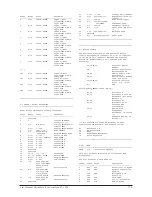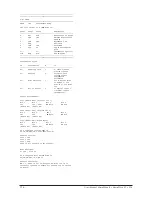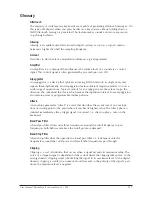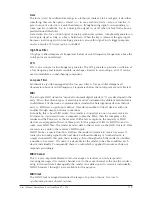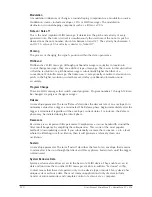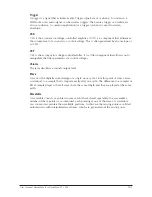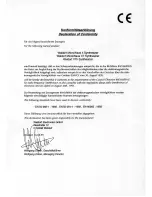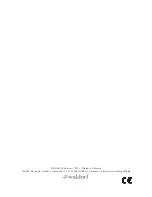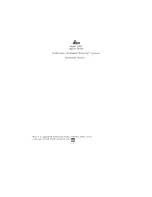
Control Change (Controllers)
MIDI messages enable you to manipulate the response of a sound generator to a significant
degree.
This message essentially consists of two components:
• The Controller number, which defines the element to be influenced. It can be
between 0 and 120.
• The Controller value, which determines the extent of the modification.
Controllers can be used for effects such as slowly swelling vibrato, changing the stereo
panorama position and influencing filter frequency.
CV
CV is the abbreviation for control voltage. In analog synthesizers, control voltages are used
to control sound parameters like pitch, cutoff frequency etc. E.g. to get a tremolo effect, the
output signal of a LFO must be routed to the CV input of an (or several) oscillator(s).
Decay
"Decay" describes the descent rate of an envelope once the Attack phase has reached its
zenith and the envelope drops to the level defined for the Sustain value.
Filter
A filter is a component that allows some of a signal's frequencies to pass through it and
dampens other frequencies. The most important aspect of a filter is the filter cutoff
frequency. Filters generally come in four categories: low pass, high pass, band pass, and
band stop. A low pass filter dampens all frequencies above the cutoff frequency. A high
pass filter in turn dampens the frequencies below the cutoff. The band pass filter allows
only those frequencies around the cutoff frequency to pass, all others are dampened. A
band stop filter does just the opposite, i.e. it dampens only the frequencies around the
cutoff frequency. The most common type is the low pass filter.
Filter Cutoff Frequency
The filter cutoff frequency is a significant factor for filters. A low pass filter dampens the
portion of the signal that lies above this frequency. Frequencies below this value are
allowed to pass through without being processed.
Envelope
An envelope is used to modulate a sound-shaping component within a given time frame so
that the sound is changed in some manner. For instance, an envelope that modulates the
cutoff frequency of a filter opens and closes this filter so that some of the signal's
frequencies are filtered out. An envelope is started via a trigger, usually a fixed trigger.
Normally, the trigger is a MIDI Note. The classic envelope consists of four individually
variable phases: Attack, Decay, Sustain and Release. This sequence is called an ADSR
envelope. Attack, Decay and Release are time or slope values, and Sustain is a variable
volume level. Once an incoming trigger is received, the envelope runs through the Attack
and Decay phases until it reaches the programed Sustain level. This level remains constant
until the trigger is terminated. The envelope then initiates the Release phase until it reaches
the minimum value.
118
User’s Manual MicroWave II • MicroWave XT • XTk



